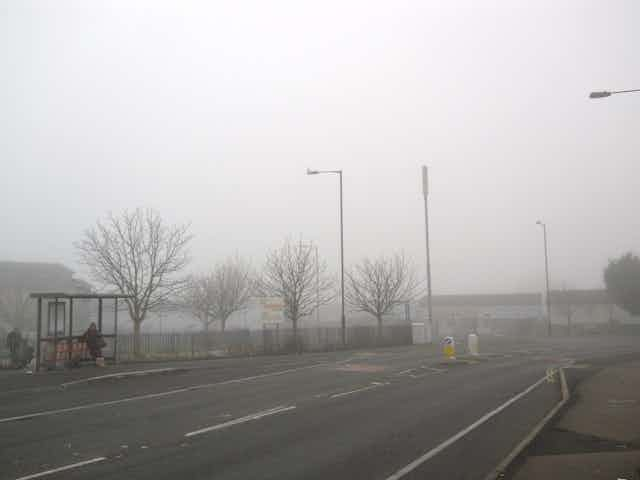Rural bus services in England and Wales are in meltdown, with routes being withdrawn or scaled back at a calamitous rate, as local authorities make huge budget cuts and several operators cease trading due to financial difficulties.
This summer has seen the demise of Webberbus in Somerset, Silcox in South Wales and GHA in North Wales, Cheshire and Shropshire. These closures follow the earlier collapse of operators such as Tates and Western Greyhound, as well as several smaller operators.
These companies operated a mix of commercial and tendered bus services across largely rural areas, as well as serving some important market towns such as Wrexham, Oswestry, Taunton, Truro and Carmarthen. They crumpled in the face of cuts in tendered services supported by local councils, competition on their most profitable routes from other operators and reductions in the reimbursement rates for carrying concessionary pass holders.

In each case services ceased abruptly after administrators were called in. Passengers were literally left stranded and employees faced instant redundancy. As a result, local council officials were left with the urgent task of arranging mandatory home-to-school transport. In some cases transport even had to be prioritised for pupils sitting important external examinations such as GCSEs and A-Levels.
The cost of providing such stopgap services is high. As such, socially desirable but non-mandatory rural bus services have been left to wither.
Going bust
In many counties – including Lancashire, Cumbria, North Yorkshire, Northamptonshire and Oxfordshire – rural services have already been axed by the local councils. Few operators have been prepared to take on the risk of operating these services commercially, especially after reimbursement rates for concessionary pass holders were reduced to 40% of a full fare, or even lower.
In North Yorkshire, one operator attempted to retain a previously supported service on three days a week. It opted to increase moderately high fares by at least 50%, in the hope of making the service sustainable. But even though the route includes a major tourist attraction, the service has failed to break even, and the operator is withdrawing it from September. Indeed, continuing could have bankrupted the entire business, as most of the local passengers are concessionary pass holders and the reimbursement rate is now half of what it was five years ago.
Meanwhile, some routes have been “rescued” by commercial operators in Lancashire, but the service is very limited. Typically, the reduced services enable residents of outlying small towns and villages to make shopping trips into their nearest large town or city. But they allow for very little flexibility, which makes it difficult to arrange hospital appointments, for example, which may not run to schedule.

The long waits between buses mean it is not possible for the city residents to use these services spontaneously, to visit the outlying small towns and villages, see friends and relatives, or simply to enjoy the countryside.
In any case, it is unlikely that many of these services will survive, judging by the situation in Cumbria, where many services lost their financial support more than two years ago.
Making a change
A number of Community Interest Companies (CICs) have been set up to operate local bus services. Dales & Bowland CIC – of which I am the director – is one of the longest established and most successful CICs. But we now face the prospect of making major cuts to our services in 2017, unless we can establish new funding streams to support the operation of rural buses.
Politicians made some attempts to address the situation. When the Bus Services Bill was considered by the House Of Lords, Baroness Jones of Whitchurch proposed an amendment to give traffic commissioners the right to designate a “bus route of community value”. This would have given them the power to place a six-month “moratorium” on its withdrawal, and offered the local community an opportunity to maintain it.
Unfortunately, the amendment was unsuccessful, and the bill now contains little hope for rural bus services. Indeed, the hotch-potch of models proposed for regulation could strangle cross-boundary services into metropolitan areas (such as services from West Yorkshire to the Yorkshire Dales, or Greater Manchester to the Peak District) with even more bureaucracy.
Like the concessionary travel schemes, the bill is designed solely with high-frequency urban and inter-urban services in mind. But many urban and inter-urban bus routes are over-serviced during the daytime, as operators compete on the road, with their fuel costs subsidised by the universal Bus Service Operators Grant. Yet this actually contributes to congestion in some city centres such as Nottingham, Leeds and Oxford.
If this subsidy were removed, it would add less than 5% to total bus operating costs, which are dominated by labour, depreciation and insurance costs. But it might also eliminate some of the competition, as many competing services operate on fine margins. This would release the funds to support rural bus services, by removing the incentive to channel resources into urban routes.
It would also help to regulate the services on many interurban routes, which go from having a plethora of buses during the day, to none at all after 6pm or on Sundays. Competition between operators should exclude franchises, as is the case in London and almost all of mainland Europe.
“Do nothing” is not an option for rural bus services: they are the arteries of the rural economy. Action is needed now to arrest the decline, while there are still some operators in business to provide these essential services.

